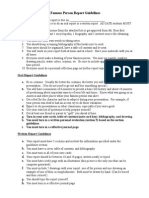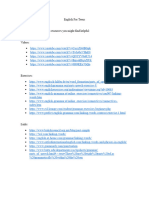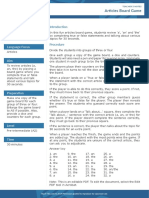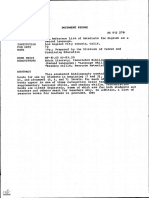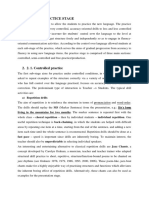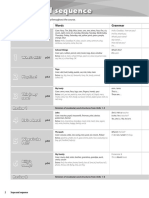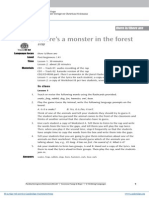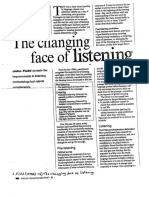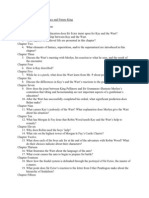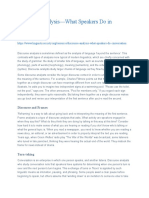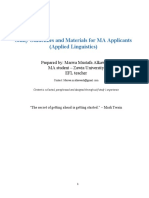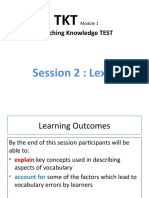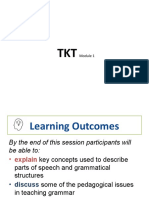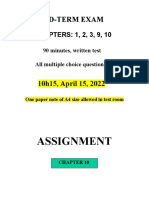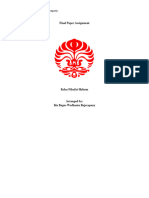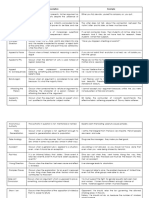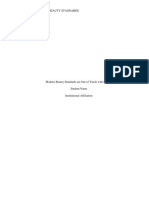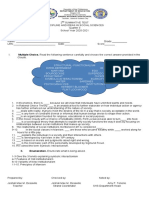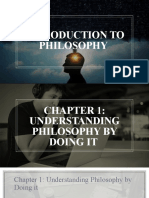Marwa Mustafa Alkawash – 4th Semester
Discourse Analysis—What Speakers Do in Conversation
Discourse analysis is sometimes defined as the analysis of language 'beyond the sentence'. This
contrasts with types of analysis more typical of modern linguistics, which are chiefly concerned
with the study of grammar: the study of smaller bits of language, such as sounds (phonetics and
phonology), parts of words (morphology), meaning (semantics), and the order of words in
sentences (syntax). Discourse analysts study larger chunks of language as they flow together.
Some discourse analysts consider the larger discourse context in order to understand how it
affects the meaning of the sentence. For example, Charles Fillmore points out that two sentences
taken together as a single discourse can have meanings different from each one taken
separately. To illustrate, he asks you to imagine two independent signs at a swimming pool:
"Please use the toilet, not the pool," says one. The other announces, "Pool for members only." If
you regard each sign independently, they seem quite reasonable. But taking them together as a
single discourse makes you go back and revise your interpretation of the first sentence after
you've read the second.
What is discourse analysis used for?
Conducting discourse analysis means examining how language functions and how meaning is
created in different social contexts. It can be applied to any instance of written or oral language,
as well as non-verbal aspects of communication such as tone and gestures.
Materials that are suitable for discourse analysis include:
Books, newspapers and periodicals
Marketing material, such as brochures and advertisements
Business and government documents
Websites, forums, social media posts and comments
Interviews and conversations
By analyzing these types of discourse, researchers aim to gain an understanding of social groups
and how they communicate
How is discourse analysis different from other methods?
Unlike linguistic approaches that focus only on the rules of language use, discourse analysis
emphasizes the contextual meaning of language.
It focuses on the social aspects of communication and the ways people use language to achieve
specific effects (e.g. to build trust, to create doubt, to evoke emotions, or to manage conflict).
Instead of focusing on smaller units of language, such as sounds, words or phrases, discourse
analysis is used to study larger chunks of language, such as entire conversations, texts, or
collections of texts. The selected sources can be analyzed on multiple levels.
1
�Big “D” and little “D”
In his analysis of the role of language in society, Gee argues that language has uses that go
beyond common use of conveying information (Gee, 2003). Language is a tool that people use
to situate action by giving context-specific meanings to actions and to the objects involved in
those actions.
Language also is used to convey perspectives by giving others "alternative ways to view one and
the same state of affairs" (Gee, 1999). To study how language works, he developed the concepts
of little "d" and big "D" discourse.
With little "d" discourse, he refers to the analysis of specific instances of language-in-use.
Big "D" Discourse, on the other hand, refers to ways of thinking, acting, doing and being in the
world.
Discourses can be thought of as identity kits that exist in the social context of the groups that
affiliate with such identities. This entails a view of learning as the gradual adoption by learners of
the practices, specialist language and ways of thinking associated with a discourse.
Discourses, even though a useful analytic device, are not static and well defined; on the contrary,
discourses tend to overlap over each other. In social games like Second Life, members can shift
the shapes, looks and ways of their avatar according to specific groups. These groups are
usually organized in "physical" areas, called parcels or islands, in the virtual world on which
group members gather. As such, a player may belong to the Puppy Lover group in one area, be a
member of the Animal Rights group in another area, and belong to a third hybrid group that loves
puppies and fights for their rights.
Discourse and Frames : 'Reframing' is a way to talk about going back and re-interpreting the
meaning of the first sentence. Frame analysis is a type of discourse analysis that asks, What
activity are speakers engaged in when they say this? What do they think they are doing by talking
2
�in this way at this time? Consider how hard it is to make sense of what you are hearing or reading
if you don't know who's talking or what the general topic is. When you read a newspaper, you
need to know whether you are reading a news story, an editorial, or an advertisement in order to
properly interpret the text you are reading. Years ago, when Orson Welles' radio play "The War of
the Worlds" was broadcast, some listeners who tuned in late panicked, thinking they were
hearing the actual end of the world. They mistook the frame for news instead of drama.
Turn-taking : Conversation is an enterprise in which one person speaks, and another listens.
Discourse analysts who study conversation note that speakers have systems for determining
when one person's turn is over and the next person's turn begins. This exchange of turns or
'floors' is signaled by such linguistic means as intonation, pausing, and phrasing. Some people
await a clear pause before beginning to speak, but others assume that 'winding down' is an
invitation to someone else to take the floor. When speakers have different assumptions about
how turn exchanges are signaled, they may inadvertently interrupt or feel interrupted. On the
other hand, speakers also frequently take the floor even though they know the other speaker has
not invited them to do so.
Listenership too may be signaled in different ways. Some people expect frequent nodding as well
as listener feedback such as 'mhm', 'uhuh', and 'yeah'. Less of this than you expect can create
the impression that someone is not listening; more than you expect can give the impression that
you are being rushed along. For some, eye contact is expected nearly continually; for others, it
should only be intermittent. The type of listener response you get can change how you speak: If
someone seems uninterested or uncomprehending (whether or not they truly are), you may slow
down, repeat, or overexplain, giving the impression you are 'talking down.' Frederick Erickson
has shown that this can occur in conversations between black and white speakers, because of
different habits with regard to showing listenership.
Discourse Markers : 'Discourse markers' is the term linguists give to the little words like 'well',
'oh', 'but', and 'and' that break our speech up into parts and show the relation between parts. 'Oh'
prepares the hearer for a surprising or just-remembered item, and 'but' indicates that sentence to
follow is in opposition to the one before. However, these markers don't necessarily mean what
the dictionary says they mean. Some people use 'and' just to start a new thought, and some
people put 'but' at the end of their sentences, as a way of trailing off gently. Realizing that these
words can function as discourse markers is important to prevent the frustration that can be
experienced if you expect every word to have its dictionary meaning every time it's used.
Speech Acts : Speech act analysis asks not what form the utterance takes but what it does.
Saying "I now pronounce you man and wife" enacts a marriage. Studying speech acts such as
complimenting allows discourse analysts to ask what counts as a compliment, who gives
compliments to whom, and what other function they can serve. For example, linguists have
observed that women are more likely both to give compliments and to get them. There are also
cultural differences; in India, politeness requires that if someone compliments one of your
possessions, you should offer to give the item as a gift, so complimenting can be a way of asking
for things. An Indian woman who had just met her son's American wife was shocked to hear her
new daughter-in-law praise her beautiful saris. She commented, "What kind of girl did he marry?
3
�She wants everything!" By comparing how people in different cultures use language, discourse
analysts hope to make a contribution to improving cross-cultural understanding.


